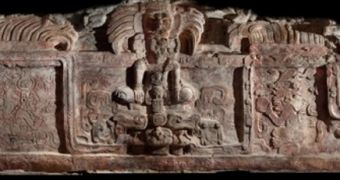Archaeologists carrying out excavations in Guatemala have recently stumbled upon a stucco relief dating back to Maya times.
Information shared with the public says the facade was discovered while archaeologists were exploring a tunnel at the site of an ancient Maya city dubbed Holmul.
Specialists suspect the facade, which measures approximately 26 feet (8 meters) in length and 6.5 feet (2 meters) in height, is roughly 1,400 years old.
Human figures sporting bird headdresses and jewelry are the main focus of this carving, archaeologists explain.
The relief also features several inscriptions.
These indicate workers and artists created this facade after being ordered to do so by Ajwosaj, presumed to be the ruler of the kingdom of Naranjo towards the end of the 6th century.
“The new inscription provides the first glimpse of the remarkable extent of Ajwosaj’s political and religious authority,” specialist Alex Tokovinine argues.
Investigations revealed that, when created, most of the facade was red. Other colors, i.e. blue, green and yellow, were only used to splash on some details.
Evidence suggests that, some time ago, grave robbers came fairly close to finding the artwork themselves.
Thus, the tunnel leading to this stucco relief appears to have been opened by looters in the past.
However, the grave robbers did not find the facade. If they had, odds are they would have destroyed it.
Live Science informs us that this facade decorates a rectangular building made up of a multitude of rooms.
Since this building sits under a structure built on top of it, archaeologists are having a rather difficult time making head and tail of its architecture.
According to the same source, it was only last year that archaeologists exploring these rooms came across a wooden funerary mask, 28 ceramic vessels and several human remains. The researchers hope that, in the months to come, they will find other Maya relics.

 14 DAY TRIAL //
14 DAY TRIAL //